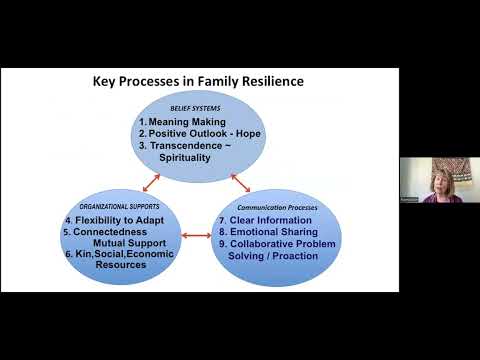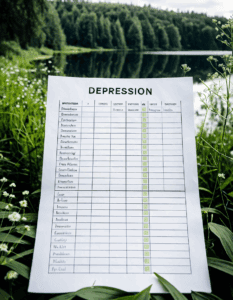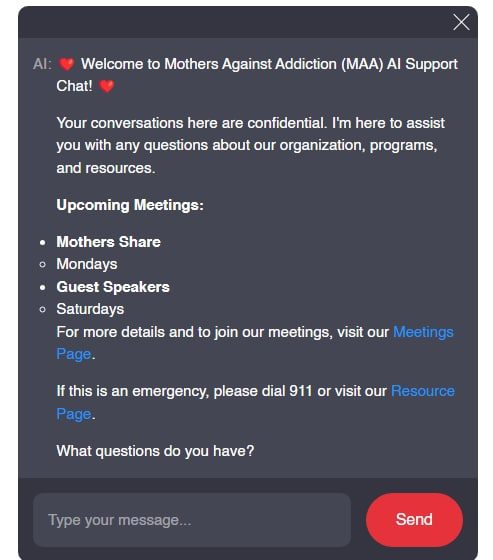The Need for Family Resilience in Times of Addiction
Family resilience is essential for families coping with the destructive impacts of addiction. This struggle often drags families through emotional and financial turmoil, affecting every family member along the way. Building family resilience involves developing strength, fostering hope, and finding ways to face these challenges head-on. It’s about recognizing that while the storm rages, families have the capacity to weather it together.
But why exactly is resilience so essential during these times? Well, it’s not just about surviving the immediate crisis. It’s about building long-term strength and coping strategies that can help you face future challenges. Families with family resilience are better equipped to adapt to stressors, make informed decisions, and support each other through thick and thin. The concept reaches beyond merely surviving; it encompasses thriving in adverse conditions by leveraging internal and external resources.
Recognizing the Impact of Addiction on Family Dynamics
To build family resilience, it’s crucial to understand how addiction influences family dynamics. Take the Smith family, for instance. When their teenage son became addicted to opioids, the impact didn’t just affect him but rippled through the entire family unit. The emotional upheaval was palpable, causing stress, conflict, and even strain in previously strong relationships.
Addiction introduces a chaotic element into the family environment, upending routines and destabilizing emotions. This derails family rituals, erodes trust, and often leads to feelings of isolation for the person struggling with addiction. In such cases, families might feel like they’re on a never-ending rollercoaster of emotions ranging from hope to despair. Recognizing this impact is the first step towards crafting pathways for addiction prevention in Families.
Moreover, the social stigma associated with addiction often amplifies the family’s struggle, leading to secrecy and silence. Instead of reaching out for support, families might withdraw, feeling ashamed or judged. This isolation further disintegrates family unity. Understanding these dynamics aids in highlighting the importance of family recovery Programs, where communal support can provide the necessary environment for healing and recovery.
| Category | Description | Key Components | Benefits |
| Understanding Family Resilience | A strengths-oriented approach to managing adversity and fostering positive outcomes at the individual, family, and community levels. | – Family Belief Systems – Organizational Patterns – Communication/Problem-Solving |
– Better adaptation to stressors – Optimal family functioning |
| 7 Cs of Resilience | Essential components to build resilience within families. | – Competence: Ability to handle situations effectively – Confidence: Belief in one’s own abilities – Connection: Healthy relationships – Character: A sense of right and wrong – Contribution: Understanding the importance of personal contributions – Coping: Ability to manage stress – Control: Belief in the ability to influence outcomes |
– Holistic development – Greater preparedness for adversities |
| Domains of Family Resilience | Domains that encompass the key processes and mechanisms that mediate recovery and adaptation. | – Family Belief Systems: Shared values and meanings – Organizational Patterns: Stability, flexibility, and connectedness – Communication/Problem-Solving: Clear, constructive communication and problem-solving skills |
– Enhanced coping mechanisms – Increased family unity |
| Types of Resilience | Various dimensions in which families can exhibit resilience. | – Physical Resilience: Ability to maintain health – Mental Resilience: Psychological well-being – Emotional Resilience: Ability to manage and express emotions – Social Resilience: Strong social networks and relationships |
– Comprehensive support system – Holistic well-being |
| Characteristics of Resilient Families | Common traits shared by families that demonstrate high resilience. | – Shared beliefs and attitudes that facilitate coping – Maintenance of routines and rituals with flexibility – Effective communication about information and feelings |
– Improved family dynamics – Better stress management |
| Family Resilience Practice Approach | A focus on family adaptation to both predictable and unpredictable stressors. | – Predictable Transitions: Navigating parenthood and adolescence – Unexpected Events: Handling disabilities or the death of a child |
– Enhanced adaptation to change – Greater emotional and behavioral stability |
Strategies for Enhancing Family Resilience: Real-world Examples
1. Open Communication Channels
Open communication is the bedrock of family resilience. The Johnson family exemplified this by instituting a “family meeting” ritual every Sunday. Each member had the chance to express their concerns and feelings without fear of judgment. This practice fostered an environment of understanding and collective strength. Honest dialogues help in demystifying the struggles and allow family members to offer effective support.
2. Seeking Professional Help
The Martinez family sought professional help by engaging a licensed therapist specialized in addiction-related cases. This step helped them navigate their complex emotions and develop coping mechanisms. Accessing professional services, like those from the American Psychological Association, offers structured guidance that personalized approaches often lack. Professional interventions bridge the gap between emotional turmoil and logical coping strategies.
3. Educational Empowerment
The Wilson family found strength through educational workshops facilitated by SAMHSA (Substance Abuse and Mental Health Services Administration). These sessions equipped them with knowledge about addiction, effective coping strategies, and ways to support their loved ones through the rehabilitation process. Empowering families through education fosters a sense of control over the situation, reducing helplessness and promoting proactive participation in recovery.
4. Financial Management and Planning
Addiction often brings financial strain. For example, the Liu family worked with financial advisors to manage rehabilitation costs. Organizations like the Partnership to End Addiction offer invaluable financial planning advice tailored to families in crisis. Addressing financial concerns head-on prevents them from becoming an additional burden, allowing families to focus on emotional and physical recovery.
5. Building Support Networks
Lisa and her family benefited immensely from joining support groups like Al-Anon. These groups offer emotional support and share coping strategies from people who understand firsthand the struggles of dealing with a loved one’s addiction. Being part of a supportive community reduces feelings of isolation and provides a space where families can share experiences and gain new perspectives.
Recognizing and Celebrating Small Triumphs
Small victories add up to significant progress. Families like the Chens celebrate each milestone in their recovery journey, fostering a culture of positivity and reinforcement. Creating rituals around these small victories can provide a sense of achievement and promote ongoing motivation. Recognition of even minor accomplishments contributes to a sustained effort towards long-term recovery and builds family resilience.
Adopting a Long-term Perspective
Resilience is not just about immediate solutions but also about envisioning a hopeful future. For the Davis family, journaling has been an invaluable tool. Documenting their journey prompts reflection and long-term goal setting. This practice helps them see how far they’ve come and keeps their eyes on their ultimate objective: lasting recovery. Adopting a long-term perspective transforms obstacles into stepping stones, fostering a more resilient love and support system.
Self-care for Family Members
Self-care is an often-overlooked yet critical component of family resilience. The O’Neills emphasize individual well-being by dedicating time for each family member to engage in activities they enjoy. Personal time reduces stress and renews individual resolve, which in turn contributes to the overall strength of the family. Self-care practices act as a buffer, ensuring that family members have the emotional energy required to support their loved ones.
Leveraging Technology and Innovation
The modern era offers numerous digital tools to support the recovery process. Platforms like WeConnect Health Management provide vital digital support for families. These tools help families stay connected, track progress, and access resources virtually. Technology bridges geographical barriers and offers real-time support, making it easier to maintain resilience even in the face of unexpected challenges.
Using online resources can also facilitate connections between families and professionals or social groups offering support. For instance, the story of Bénie Traorés innovative use of digital platforms highlights how technology can foster community and coping mechanisms, aiding families in leveraging a more robust support system.
To truly foster family resilience in the face of addiction, it is essential to focus on open communication, professional intervention, educational empowerment, financial management, support networks, celebrating small victories, self-care, and leveraging technology. Every family’s journey is unique, and it’s about finding an approach that works for their specific dynamic and needs.
Family resilience isn’t just about surviving the storm but about learning how to dance in the rain. By embracing shared strength, understanding, and continuous effort, families can not only cope with but also emerge stronger from the challenges posed by addiction. For more information on resources and support, visit Mothers Against Addiction.
Family Resilience Building Coping Strengths
Family resilience is like the glue that holds families together during tough times. Having strong family resilience means you can bounce back from challenges, whether it’s dealing with an unexpected financial hit or facing the heartache of addiction. Did you know that family resilience can also be linked to some quirky facts and unexpected trivia? Let’s dive into some fun and fascinating points that show just how important family resilience can be.
Historic Tidbits
History often shows us the power of resilience in the face of adversity. For instance, the Granger Laws, which aimed to regulate rising fare prices of railroad and grain elevator companies in the 19th century, sprang from the collective effort of resilient families standing up for their rights. This piece of history highlights how strong family and community bonds can lead to significant legislative changes, emphasizing the indispensable strength families hold when united.
Celebrities and Resilience
It’s not just everyday families who need a bit of resilience now and then. Even celebrities face tough times and show incredible resilience. Take actor-comedian Hayes Hargrove, for example. Behind his comedic genius, he’s faced personal battles that required immense resilience to overcome, proving that every family, no matter how famous, has its struggles. His journey can remind us all that with support and determination, resilience is possible.
Surprising Connections
Interestingly, even places can reflect resilience. Consider the differences between how countries like the USA and Sweden handle family policies and social support systems. The drive for better work-life balance in Sweden has had a profound impact on family resilience, demonstrating that policies can play a major role in strengthening family ties. These international comparisons can offer insightful lessons for improving family resilience in our communities.
Overcoming Challenges
When it comes to overcoming domestic issues, family resilience is crucial. Domestic violence And addiction are two critical problems that families often face. Strong family bonds and resilience can provide a much-needed support system for those affected, taking the first steps towards recovery. Creating a supportive environment can make all the difference, helping families to rebuild and thrive.
Financial Stability
Financial stability also plays a big role in family resilience. Is buying a home on your mind? In mortgage CA markets, securing a reliable mortgage can be one of those challenges where resilience plays a key role. Understanding the intricacies of mortgage plans and maintaining financial stability are essential for strengthening family resilience, giving families a foundation to weather economic storms.
From historic laws to celebrity stories and international policies, examples of resilience are all around us. By drawing inspiration from these stories, families can find the strength to navigate their own challenges, and build a resilient, supportive environment.

How to build resilience in a family?
To build resilience in a family, focus on developing strong belief systems, keeping regular routines with some flexibility, and communicating effectively about both information and feelings. It helps families to buffer stress and adapt well to hardships.
What are the 7 C’s of resilience?
The 7 C’s of resilience are competence, confidence, connection, character, contribution, coping, and control. Investing time in these areas helps build a solid support system to handle tough times more effectively.
What are the key processes in family resilience?
Key processes in family resilience fall into three domains: belief systems, organizational patterns, and communication/problem-solving. These areas help families cope better, manage stress, and adapt to changes smoothly.
What are the 4 types of resilience?
The four types of resilience are physical, mental, emotional, and social. Each type plays a crucial role in how individuals and families rebound from challenges and maintain overall well-being.
What is an example of a resilient family?
An example of a resilient family is one that maintains supportive beliefs and attitudes, sticks to routines with flexibility, and communicates well about both facts and feelings. Such families are better equipped to handle stress and adapt effectively.
What are the 7 rules of resilience?
The seven rules of resilience involve acknowledging feelings, maintaining routines, seeking support, practicing self-care, staying hopeful, learning from experiences, and being adaptable. They help you navigate tough times with greater ease.
What causes lack of resilience?
Lack of resilience can be caused by chronic stress, lack of social support, negative thinking, or traumatic experiences. Without resilience, it can be challenging to cope with adversity and bounce back from difficult situations.
What are the 5 pillars of resilience?
The five pillars of resilience include self-awareness, mindfulness, self-care, positive relationships, and purpose. These elements help individuals stay balanced and recover well from life’s challenges.
What are the 4 pillars of resilience?
The four pillars of resilience are physical resilience, mental resilience, emotional resilience, and social resilience. Focusing on these areas helps maintain overall well-being and better adaptability.
What is the family resilience theory?
The family resilience theory emphasizes strengths in families, focusing on positive outcomes in the family system, individual members, and how well the family fits within its environment. It recognizes the unique meanings families attach to risk and adaptation.
What are the barriers to family resilience?
Barriers to family resilience can include poor communication, lack of flexibility, unresolved conflicts, financial stress, and insufficient social support. These obstacles make it tougher for families to adapt and thrive.
What do resilient families do?
Resilient families maintain positive beliefs, stick to routines with some flexibility, and communicate openly about their feelings and facts. They are better at handling stress and adapting to changes.
What are the 3 P’s of resilience?
The 3 P’s of resilience are perspective, perseverance, and purpose. Keeping a balanced view, staying determined through challenges, and having a clear sense of meaning helps in maintaining resilience.
How to build emotional resilience?
To build emotional resilience, practice mindfulness, maintain strong relationships, focus on self-care, seek professional help if needed, and keep a hopeful outlook. These practices help manage emotions and recover from stress effectively.
What do you think happens to someone who doesn’t have resilience?
Without resilience, someone might struggle to cope with adversity, find it hard to recover from setbacks, and experience higher stress and emotional difficulties. Resilience helps navigate life’s challenges more smoothly.
What are 5 ways of building resilience?
Five ways of building resilience include developing a positive outlook, maintaining strong social connections, practicing self-care, learning from experiences, and staying adaptable. These strategies help you better handle life’s ups and downs.
What are the 7 ingredients of resilience?
The seven ingredients of resilience are competence, confidence, connection, character, contribution, coping, and control. Fostering these elements helps build a strong foundation to tackle life’s challenges.
How do you build parental resilience?
To build parental resilience, focus on maintaining self-care, seeking social support, setting realistic expectations, communicating effectively, and staying flexible. These practices help parents handle stress and challenges better.
What are 3 ways a person might build resilience?
Three ways to build resilience are staying connected with supportive people, keeping a positive and hopeful outlook, and maintaining flexibility in routines and plans. These steps help you navigate tough situations more effectively.




























